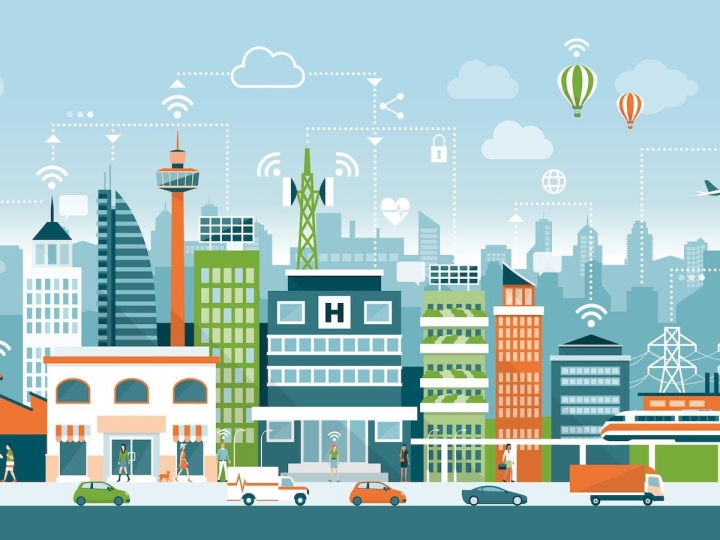
Editorial1.2 Billion Hours at Stake: Can the US Government Catch Up With AI?
While the private sector races ahead with AI, automating customer service, optimizing supply chains and rewriting the rules of work, public systems are caught in a high-stakes balancing act. On one hand, there’s mounting pressure to modernize, to keep pace with both expectations and cyber threats. On the other, there's an outdated infrastructure, a workforce built for a different era and a trust deficit that can't be patched with a chatbot.
The question isn’t if AI will transform government — it already is. The real question is: Are we ready?
The Infrastructure Gap: Modern Tech, Ancient Pipes
Let’s start with the pipes. Much of our public infrastructure, including digital, was built for a pre-cloud, pre-AI world. Legacy code, siloed databases, inconsistent security protocols and spotty broadband access in rural areas mean that simply “plugging in” AI tools isn’t realistic for many agencies.
Federal departments with advanced resources are scrambling to inventory their data, standardize formats and build secure environments where AI can be deployed responsibly. Local and state governments? Many are still trying to digitize basic records. You can’t automate what you can’t access.
A Workforce That Wants In — But Can’t Gain Entry
Contrary to what people assume, public-sector employees aren’t resisting AI. A growing body of research shows most government workers want to use tech to improve their impact. They don’t have the tools or training to do it, yet.
Simpler Media Group
In fact, McKinsey reports a clear misalignment between leadership perceptions and employee readiness: US workers report high confidence in adopting AI, but many say management is slow to act, overly cautious or lacks a clear strategy. Meanwhile, surveys show that 1 in 5 public workers fear being replaced by AI, and less than half feel their organization is preparing them for what’s ahead.
This isn’t a resistance problem. It’s a resource and communication problem. When governments fail to demystify AI, when they skip training, transparency, and inclusion, they foster fear instead of curiosity.
The Education & Training Dilemma
The answer isn't just more data scientists in government buildings. It’s building AI fluency across all roles, from frontline case managers to procurement teams to municipal planners.
Programs like Intel’s AI for Workforce and federal initiatives like the National AI Talent Surge are great starts, but they reach a fraction of the people who need access. Most public-sector employees don’t need to build models from scratch. They need to understand what AI can and can’t do, how to interpret its outputs and when to override it.
The future-proof government workforce isn’t just more technical, it’s more translational.
Tactical Wins That Actually Work
While the big transformation is slow-moving, smart public agencies are already finding wins in small-scale deployments:
- Fraud detection in benefits programs, using AI to flag anomalies and reduce waste.
- AI-powered chatbots reducing call volume at state DMVs by 40–50%, while freeing staff for complex cases.
- Predictive maintenance for city infrastructure, identifying water main failures and road damage before they happen.
- Cybersecurity automation, catching intrusion attempts faster than any human SOC team could.
These aren’t moonshots. They’re high-leverage applications that offer measurable ROI without overhauling an entire agency.
Risk Without Guardrails: Bias, Black Boxes and Blowback
Let’s be blunt: the risks are real. AI deployed irresponsibly in government settings can amplify bias, reinforce systemic inequality and erode trust. Think about predictive policing gone wrong. Or housing algorithms that filter out low-income applicants. Or AI denial decisions for benefits with no human recourse.
Government has a different social contract than business. The stakes are higher. Transparency, accountability and explainability aren’t optional, they’re foundational. If citizens don’t understand how a decision was made, or worse, if that decision was wrong, they lose trust in the system.
That’s why AI governance must be baked in from the start:
- Audit trails
- Human-in-the-loop safeguards
- Bias detection and mitigation
- Citizen-facing explainability
Anything less isn’t innovation, it’s abdication.
What AI-Ready Public Systems Look Like
What does “AI readiness” mean for the public sector?
It means:
- Data infrastructure that’s accessible, secure and ethically governed
- Leadership alignment that matches vision with budget, strategy and urgency
- Workforce fluency — not just data scientists, but analysts, clerks, managers and auditors who can use AI tools responsibly
- Clear governance frameworks, from local councils to federal agencies
- Public trust built on transparency, inclusion and accountability
This isn’t a one-and-done checklist. A mindset. A commitment to iterate forward.
The Opportunity: Tech-Driven Public Good
Simpler Media Group
Here’s the upside: Deloitte estimates that automation could save US public agencies up to 1.2 billion hours annually, unlocking as much as $41 billion in value. That’s not just budget savings — it is time redirected to strategic priorities, improved service and a better citizen experience.
When done right, AI won’t replace government workers. AI will make their jobs more impactful. It will help overworked teams focus on judgment, empathy and complexity and modernize how the government earns trust in the digital age.
But none of that happens by accident. It takes intention. It takes investment. Because AI isn’t just another IT tool. AI is a shift in how government sees the world, and how the world sees government.